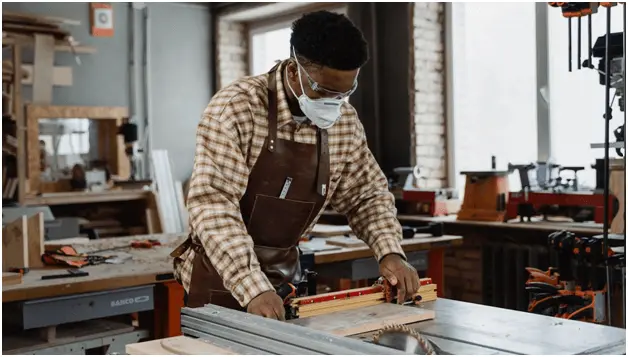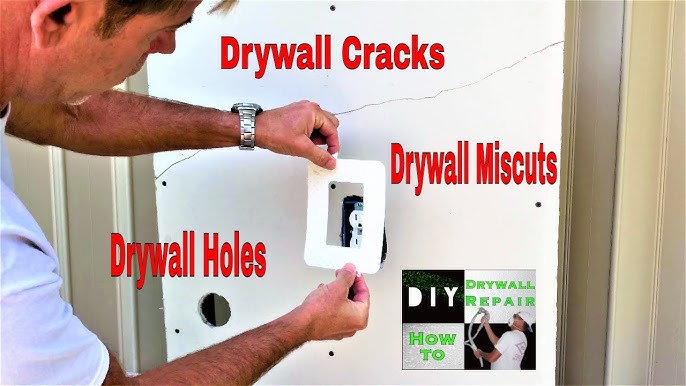Discover the Best Practices for Effective Drywall Repair Service and Installment
The art of drywall repair and installation requires a mix of ability and accuracy. Grasping the essential devices is necessary for attaining a smooth finish. Recognizing the step-by-step process can make a substantial difference in the result. Correct techniques for mudding and taping are additionally critical. What continues to be is the understanding of maintenance that ensures durability. These elements with each other produce a sleek end result worth checking out even more.

Vital Tools for Drywall Repair and Setup
When taking on drywall repair work and installment, having the right tools can considerably improve the efficiency and top quality of the work. An utility knife is necessary for cutting drywall sheets exactly, while a drywall saw can assist in making a lot more detailed cuts. Taping blades, offered in different sizes, are vital for applying joint substance smoothly and equally. A drywall sander, ideally with a dirt collection attribute, aids accomplish a polished coating, reducing the need for comprehensive cleanup.
In addition, a gauging tape warranties exact dimensions, and a level makes certain that installations are straight and plumb. Security gear, consisting of dust masks and safety glasses, need to not be forgotten to protect versus particles and dirt. A stud finder help in locating framing members, ensuring secure installation. By outfitting oneself with these crucial tools, the fixing and installment process ends up being extra convenient and results in a professional-quality end result.

Step-by-Step Overview to Patching Holes
Covering openings in drywall needs an organized approach to guarantee a seamless repair service. First, the area around the hole have to be cleaned up and any type of loose debris got rid of. For small openings, a putty blade can be made use of to use a lightweight spackle, pushing it right into the opening and smoothing the surface area. After it dries out, fining sand is necessary to produce a level surface. For bigger openings, a spot of drywall may be needed. This includes reducing a piece of drywall a little bigger than the opening, protecting it to the wall surface with screws, and making use of joint compound to cover the seams. When the compound dries out, it needs to be fined sand smooth. Ultimately, priming the patched location prior to paint will certainly assure an also finish. Following these steps will certainly result in a professional-looking repair service that mixes effortlessly with the bordering wall surface.
Methods for Seamless Drywall Setup
Achieving smooth drywall setup needs careful preparation and execution. It is vital to determine and reduce drywall sheets properly to reduce gaps. Making use of an energy blade, installers should rack up the board before snapping it along the cut line, ensuring clean sides. Properly aligning the sheets is vital; beginning with the leading and working down assists preserve uniformity.
Fastening drywall to the studs calls for consistent spacing, typically every 16 inches, using screws instead than nails for much better hold. This approach lowers the danger of pops with time. Additionally, staggering the seams in between sheets enhances structural stability and reduces the presence of joints.
Lastly, click here utilizing the best thickness of drywall for specific areas-- such as moisture-resistant kinds in shower rooms-- further adds to a perfect surface. Following these strategies will cause a professional-looking and smooth setup, establishing the stage for the succeeding completing processes.
Completing Touches: Insulation and Mudding
Finishing touches, such as taping and mudding, play a necessary role in accomplishing a refined drywall surface. Taping includes applying a slim strip of drywall tape over the seams and joints, making sure a smooth appearance. This procedure assists avoid fractures and develops a solid bond in between drywall sheets. It is essential to pick the appropriate kind of tape, with paper and fiberglass mesh being the most typical alternatives.
Mudding, or applying joint substance, adheres to taping. This substance fills in spaces and ravel the surface area for a consistent surface. It is generally used in several layers, with each coat needing to dry before fining sand. Proper technique involves feathering the sides to mix the compound right into the surrounding drywall, reducing visibility.
When completed appropriately, taping and mudding boost both the structural and aesthetic integrity of the drywall installation, resulting in a professional-quality surface.
Tips for Preserving Your Drywall After Setup

Additionally, maintaining a consistent interior moisture degree can stop warping or mold and mildew development. Using a dehumidifier in damp locations, like basements, is suggested. It's additionally advantageous to regularly paint areas that show wear, as this secures the underlying product. Lastly, when relocating furnishings or installing components, care must be exercised to stay clear of harming the drywall. By adhering to these upkeep ideas, property owners can extend the life of their drywall, protecting it remains an appealing feature of their insides.
Regularly Asked Inquiries
What Security Gear Is Necessary for Drywall Fixing and Installation?
For drywall repair and installation, crucial safety equipment includes security goggles to shield eyes, dirt masks to avoid breathing of bits, handwear covers for hand protection, and knee pads for convenience throughout prolonged kneeling. drywall contractors.
Just how Do I Figure Out the Drywall Density Needed for My Task?
To determine the drywall density needed for a job, one ought to think about the wall's structural demands, local building ordinance, and the planned use the room, normally choosing 1/2-inch or 5/8-inch drywall.
Can I Fix Drywall Without Removing Furniture From the Area?
Yes, drywall can be fixed without eliminating furnishings from the space. Careful preparation and protective procedures can minimize mess, permitting for reliable repair services while maintaining surrounding things risk-free from dust and damages during the process.
What Kinds of Drywall Are Ideal for Various Environments?
Moisture-resistant drywall is excellent for kitchen areas and washrooms, while soundproof drywall matches shared wall surfaces in apartments. Fire-rated drywall is best for garages, and common drywall works well generally living areas, making certain resilience and suitability for various settings.
For how long Does It Consider Drywall Mud to Dry Completely?
Drywall mud generally takes 24 to two days to dry entirely, relying on variables like humidity and temperature (Interior Painting). Thicker applications might need longer drying times, while thinner layers can dry faster. Appropriate air flow aids drying
The art of drywall repair and setup requires a blend of ability and precision. When carrying out drywall fixing and installation, having the right devices can significantly enhance the efficiency and quality of the work. An energy blade is crucial for cutting drywall sheets exactly, while a drywall saw can help in making more intricate cuts. Attaining seamless drywall installment demands cautious planning and implementation. Moisture-resistant drywall is excellent for restrooms and kitchen areas, while soundproof drywall matches shared walls in homes.